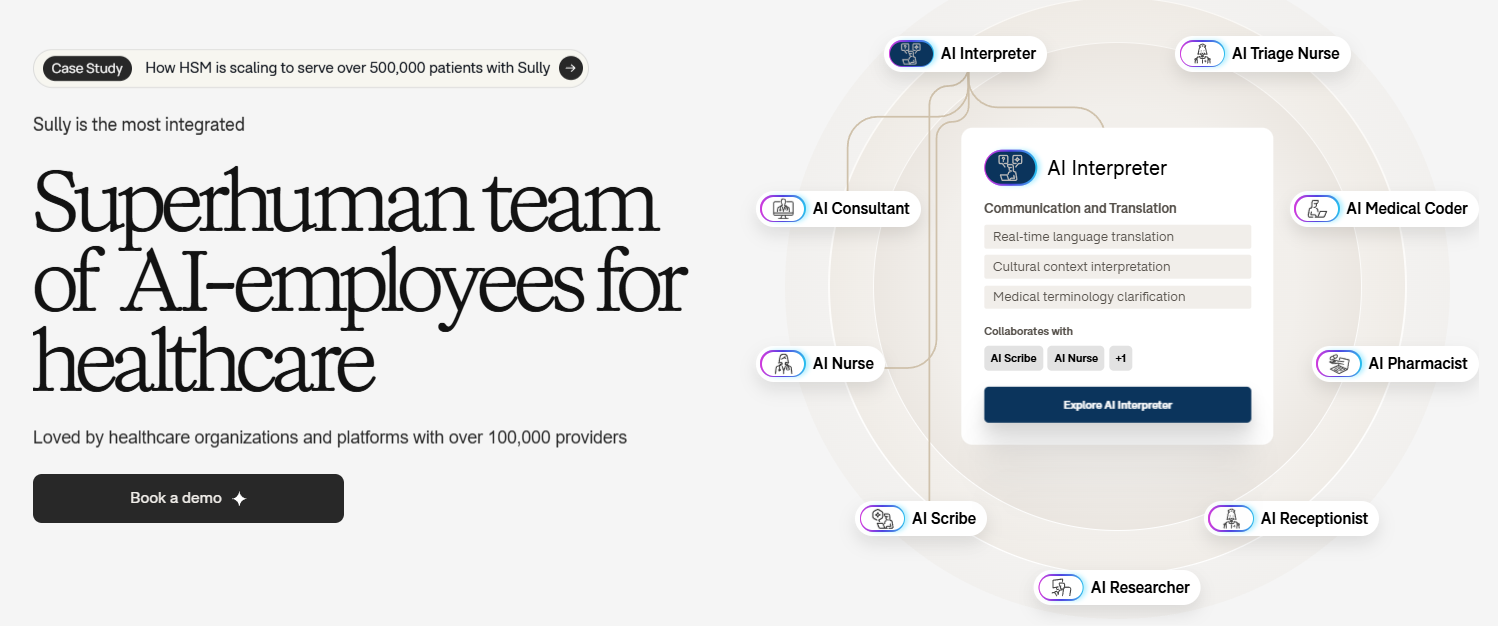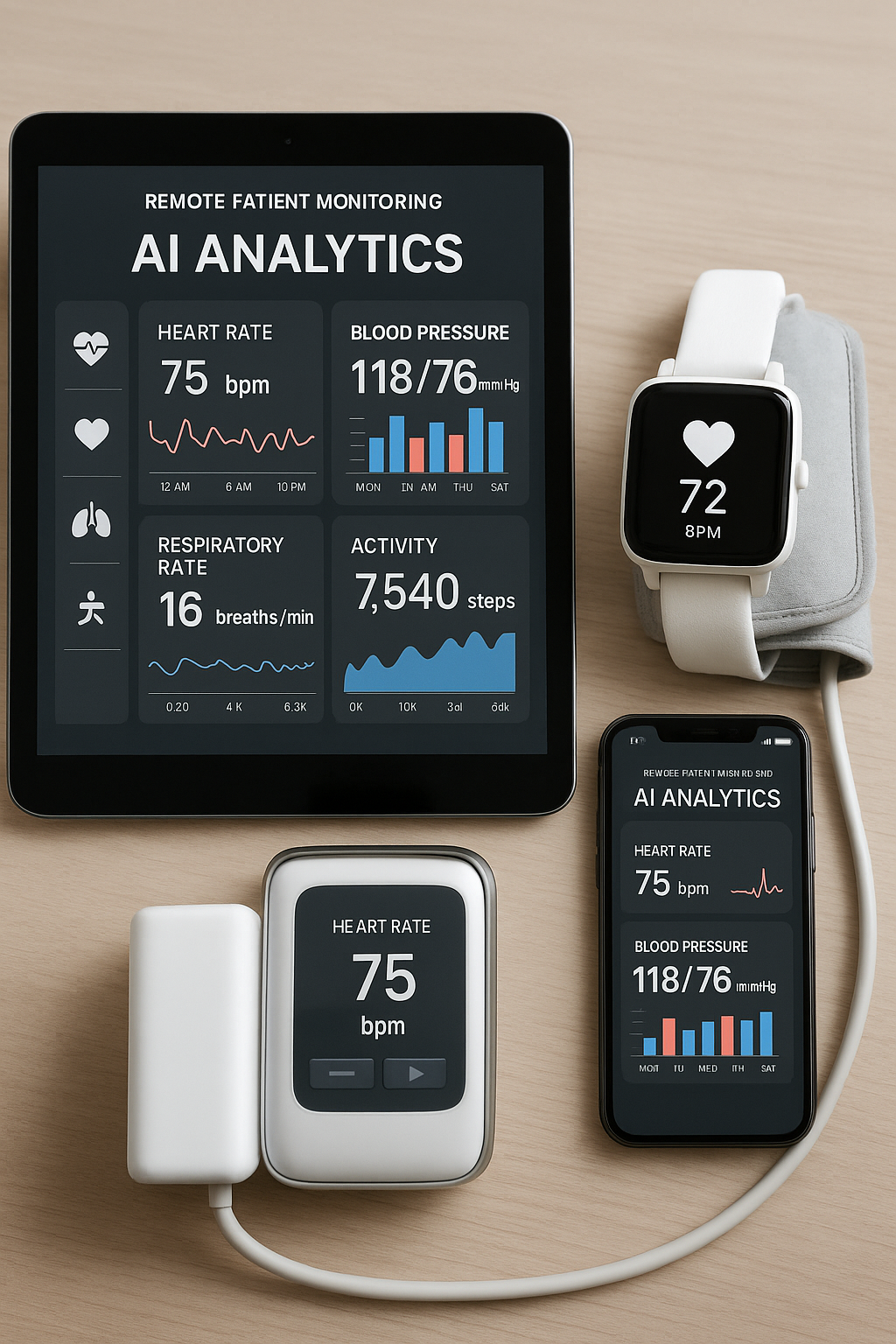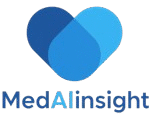Discover the leading AI healthcare tools transforming medical practice in 2025. Complete analysis of diagnostic AI, medical imaging intelligence artificial, and drug discovery platforms with real-world applications and limitations.
The healthcare industry is undergoing a major transformation through AI healthcare tools, yet many professionals remain unaware of the practical applications already deployed across medical institutions worldwide. While consumer-facing AI applications dominate media coverage, sophisticated medical AI tools are quietly revolutionizing diagnostics, clinical documentation, and patient care delivery. Recent data shows that the adoption of AI healthcare tools has accelerated beyond theory, becoming essential operational resources in leading medical facilities.
According to verified industry reports, OpenEvidence, a clinical decision support platform developed by Harvard and MIT researchers, processes over 65,000 new clinician registrations monthly, representing unprecedented adoption rates for healthcare technology. The platform’s recent $210 million funding round and $3.5 billion valuation demonstrate substantial investor confidence in medical AI applications. However, this rapid growth also raises important questions about implementation challenges, regulatory oversight, and equitable access that require careful consideration alongside the evident benefits.

AI Clinical Decision Support Systems: Transforming Medical Diagnostic Intelligence Artificial
Evidence-Based Clinical Decision Making Through AI
Clinical decision support represents one of the most mature applications of artificial intelligence in healthcare, with several platforms demonstrating measurable improvements in diagnostic accuracy and treatment selection. OpenEvidence has established partnerships with prestigious medical publications including JAMA and The New England Journal of Medicine, providing clinicians with rapid access to synthesized research findings relevant to specific patient presentations.
The platform addresses a fundamental challenge in modern medicine: the exponential growth of medical literature makes it increasingly difficult for individual practitioners to stay current with evidence-based treatment recommendations. By processing thousands of peer-reviewed studies and clinical trials, AI systems can identify relevant research within seconds and present contextually appropriate recommendations. This capability proves particularly valuable in emergency medicine, where rapid decision-making directly impacts patient outcomes.
However, important limitations exist within current AI clinical decision support systems. The quality of recommendations depends heavily on the quality and diversity of training data, potentially creating blind spots for rare conditions or underrepresented patient populations. Additionally, AI systems may struggle with complex cases involving multiple comorbidities or unusual presentations that fall outside their training parameters. Healthcare providers must maintain critical thinking skills and clinical judgment when interpreting AI-generated recommendations, treating these tools as sophisticated assistants rather than definitive authorities.
Predictive Analytics for Patient Risk Assessment
Innovaccer represents a different approach to clinical decision support through comprehensive patient data analysis and predictive modeling. Their platform aggregates information from multiple healthcare system sources to identify patients at elevated risk for complications, readmissions, or adverse events before traditional clinical indicators become apparent. This proactive approach enables intervention strategies that can prevent negative outcomes rather than merely responding to them.
The effectiveness of predictive analytics depends significantly on data quality, integration capabilities, and algorithm accuracy. Healthcare systems implementing these solutions report improved patient outcomes and reduced costs, but success requires substantial investment in data infrastructure and staff training. Organizations must also address privacy concerns and ensure compliance with healthcare data protection regulations while implementing comprehensive monitoring systems.
Medical Documentation Intelligence Artificial: Addressing Administrative Burden
Automated Clinical Documentation Systems
Healthcare providers typically spend 40-60% of their working hours on administrative tasks and electronic health record documentation, significantly reducing time available for direct patient care. This administrative burden contributes substantially to physician burnout and reduced job satisfaction across multiple medical specialties. AI-powered documentation systems promise to address these challenges through automated transcription and intelligent report generation capabilities.
Sully.ai has developed “AI medical employees” that handle patient reception, telephone triage, and clinical note transcription with integration capabilities for existing electronic health record systems. These virtual assistants demonstrate competency in understanding medical terminology, recognizing clinical significance, and generating comprehensive documentation that meets regulatory requirements. Healthcare facilities implementing these systems report documentation time reductions of up to 70% and administrative task elimination reaching 90% in some cases.

Despite these impressive efficiency gains, automated documentation systems present several implementation challenges that healthcare organizations must carefully consider. System accuracy depends on audio quality, speaker clarity, and the complexity of medical conversations, potentially requiring human oversight for complex cases. Integration with existing electronic health record systems can prove technically challenging and expensive, requiring significant IT support and staff retraining. Additionally, concerns exist regarding data security, patient privacy, and regulatory compliance when implementing AI-powered documentation solutions.
Heidi Health, based in Australia, focuses specifically on consultation report automation with emphasis on international compliance standards and regulatory requirements. Their specialized approach demonstrates particular strength in complex regulatory environments where documentation must satisfy multiple standards simultaneously, though this specialization may limit applicability in diverse healthcare settings.
AI Medical Imaging: Advanced Diagnostic Intelligence Artificial Applications
Revolutionary Imaging Analysis Capabilities
Medical imaging interpretation has traditionally required years of specialized training to develop pattern recognition skills necessary for accurate diagnosis. Radiologists invest decades learning to identify subtle abnormalities, distinguish normal variants from pathological findings, and synthesize complex imaging data into actionable clinical information. Recent advances in artificial intelligence have produced systems that match or exceed human-level performance in specific imaging interpretation tasks while offering capabilities no human radiologist could achieve.
Aidoc provides AI-powered analysis of computed tomography scans and magnetic resonance imaging studies, with FDA-cleared algorithms capable of identifying critical abnormalities requiring immediate attention. Their systems analyze complex medical images in under two minutes while flagging urgent findings for priority radiologist review. The platform has demonstrated particular effectiveness in emergency department settings, where rapid identification of time-sensitive conditions like stroke or pulmonary embolism can significantly impact patient outcomes.
However, AI medical imaging systems face important limitations that healthcare providers must understand before implementation. Algorithm performance varies significantly across different patient populations, imaging equipment types, and clinical scenarios. Systems trained primarily on data from specific demographic groups may demonstrate reduced accuracy when applied to patients with different characteristics, potentially exacerbating existing healthcare disparities. Additionally, AI imaging tools require high-quality images and standardized imaging protocols to function optimally, which may not always be available in resource-limited healthcare settings.
Global Implementation of Imaging AI Solutions
Qure.ai has focused on developing imaging analysis systems specifically designed for resource-limited environments and regions with limited radiologist availability. Their qXR platform for chest radiograph analysis and qER system for brain imaging interpretation target underserved geographic areas where patients previously lacked access to expert imaging interpretation. This approach demonstrates the potential for AI to democratize advanced diagnostic capabilities on a global scale.
The deployment of AI imaging systems in resource-limited settings presents unique challenges including unreliable internet connectivity, limited technical support capabilities, and varying equipment quality standards. Success requires careful consideration of local infrastructure limitations and ongoing technical support mechanisms. Organizations implementing these systems must also address cultural factors, training requirements, and integration with existing clinical workflows to ensure sustainable adoption.
Tempus specializes in precision oncology imaging analysis, while Viz.ai provides stroke detection capabilities that can identify cerebrovascular accidents within minutes of imaging completion. Butterfly iQ+ offers portable ultrasound systems with integrated AI interpretation for point-of-care diagnostics. These specialized applications demonstrate the breadth of AI imaging technology development across multiple medical specialties, though each requires specific validation and training for optimal performance.
Drug Discovery Intelligence Artificial: Accelerating Pharmaceutical Development
AI-Powered Molecular Design and Development
Traditional pharmaceutical development represents one of the most time-intensive and expensive processes in modern science, typically requiring 10-15 years and billions of dollars to bring a single medication from initial discovery to market availability. This extended timeline means patients with rare diseases often wait decades for effective treatments, while limited therapeutic options exist for many common conditions due to enormous development costs. Artificial intelligence is beginning to transform this process by accelerating multiple stages of drug discovery and development.
Insilico Medicine and Atomwise utilize generative adversarial networks and advanced AI architectures to enable virtual molecular design capabilities previously impossible with traditional computational chemistry approaches. These systems can evaluate millions of potential drug compounds virtually, predicting biological activity and optimizing pharmacological properties before physical synthesis or testing occurs. This virtual screening process dramatically reduces both time and costs associated with early-stage drug discovery.
Despite promising initial results, AI drug discovery faces significant challenges that may limit its transformative potential. Virtual predictions require validation through traditional experimental methods, and AI systems may miss important biological interactions not represented in training data. Regulatory agencies are still developing frameworks for evaluating AI-discovered drugs, potentially creating approval delays. Additionally, the complexity of human biology means that computational predictions may not accurately reflect real-world treatment responses, particularly for complex diseases with multiple contributing factors.
Clinical Trial Optimization Through Digital Patient Models
Unlearn.AI has developed digital patient twin technology for clinical trial optimization, creating virtual patient models using comprehensive health data and AI modeling techniques. The European Medicines Agency has validated this approach for simulating patient responses to different therapeutic interventions, potentially reducing clinical trial duration and improving success rates while maintaining safety standards.
Digital twin technology for clinical trials presents both opportunities and limitations that researchers must carefully consider. While virtual patient models can reduce recruitment requirements and improve trial design, they depend heavily on the quality and representativeness of training data. Regulatory acceptance varies across different jurisdictions, potentially limiting international applicability. The technology also requires sophisticated technical infrastructure and expertise that may not be available to all research organizations.
Remote Patient Monitoring Intelligence Artificial: Healthcare Beyond Traditional Boundaries

Continuous Health Assessment Through AI-Powered Monitoring
Traditional healthcare delivery has relied on episodic care models where patients visit healthcare facilities when experiencing symptoms or requiring routine check-ups, creating gaps in health status monitoring where significant changes may go undetected. AI-powered remote patient monitoring systems enable continuous health assessment and early intervention capabilities that can prevent complications before emergency intervention becomes necessary.
MAIA provides an open-source platform enabling collaboration between clinicians and technology developers, addressing the fundamental challenge of bridging technical capabilities with clinical needs. This collaborative approach ensures remote monitoring solutions address real-world clinical requirements rather than theoretical technical capabilities, though implementation requires significant technical expertise and ongoing support.
Remote monitoring systems face important challenges including device reliability, data accuracy, patient compliance, and integration with existing healthcare workflows. False positive alerts can overwhelm healthcare providers and reduce system effectiveness, while false negatives may provide dangerous false reassurance. Patients may experience monitoring fatigue or privacy concerns that limit long-term adherence to remote monitoring protocols.
AI on the Pulse combines wearable sensors, ambient intelligence systems, and large language models to provide comprehensive health monitoring extending beyond traditional vital sign tracking. The system detects subtle changes in activity patterns, sleep quality, medication adherence, and physiological parameters that might indicate developing health issues before clinical symptoms become apparent.
Internet of Medical Things and Connected Health Devices
Internet of Medical Things devices equipped with AI interpretation capabilities create opportunities for seamless health monitoring integrated into daily life activities. These devices can continuously track vital signs, detect early warning signs of medical emergencies, and generate personalized health recommendations based on individual patient patterns and risk factors. The technology represents a significant advancement in preventive medicine and chronic disease management.
However, IoMT devices present challenges including device accuracy, data security, regulatory compliance, and integration complexity. Healthcare organizations must evaluate the clinical utility of continuous monitoring data and develop protocols for responding to device-generated alerts. Patient privacy and data ownership concerns require careful consideration, particularly when health data is shared across multiple technology platforms and healthcare providers.
Healthcare Administration AI: Streamlining Complex Bureaucratic Processes
Automated Insurance and Administrative Processing
Healthcare administrative processes consume enormous resources while often creating barriers to patient care through complex authorization procedures, billing requirements, and regulatory compliance demands. Counterforce Health has developed AI systems specifically designed to challenge insurance coverage denials and streamline appeals processes through automated letter generation and voice-based follow-up systems.
Their Maxwell AI voice agent handles complex phone-based administrative processes that traditionally require significant human time investment. Healthcare facilities report handling 90-95% of routine administrative calls automatically while reducing administrative task burden by 20-25%. These efficiency improvements translate directly into cost savings and improved patient access to necessary treatments.
Administrative AI systems must navigate complex regulatory requirements, insurance policies, and legal frameworks that vary across different healthcare systems and geographic regions. System effectiveness depends on accurate understanding of policy language, regulatory requirements, and appeal procedures, which may change frequently. Healthcare organizations implementing these systems require ongoing legal oversight to ensure compliance with applicable regulations and professional standards.
Patient Engagement and Communication AI
Intelligent patient engagement systems revolutionize healthcare organization interactions with patients outside direct clinical encounters through personalized health education, appointment management, medication compliance support, and basic medical advice capabilities. These systems learn from patient interactions to provide increasingly personalized and effective support, creating individualized patient engagement that would be impossible through traditional approaches.
Patient engagement AI faces challenges including maintaining appropriate clinical boundaries, ensuring accurate medical information, and integrating with existing healthcare communication systems. Healthcare organizations must establish protocols for escalating complex inquiries to human providers while maintaining consistent quality standards across automated interactions.
Future Trends in Medical Intelligence Artificial Applications
Emerging Technologies and Implementation Challenges
Digital patient twin technology continues evolving beyond clinical trial applications toward comprehensive personalized medicine planning, where individual patients can have treatment options virtually tested and optimized before implementation. Current technological and regulatory limitations restrict widespread adoption, but the potential for truly personalized medicine based on individual biological and genetic characteristics represents significant advancement opportunities.
Autonomous diagnostic systems validated by regulatory agencies are emerging for specific clinical applications, with tools like IDx-DR for diabetic retinopathy screening representing the first wave of fully automated diagnostic capabilities operating without direct physician oversight. These systems prove particularly valuable in underserved geographic regions where specialist expertise is limited, potentially providing advanced diagnostic capabilities to previously underserved populations.
The economic implications of widespread healthcare AI adoption suggest development costs and timelines for new medical treatments could decrease by more than 50%. This transformation could fundamentally alter pharmaceutical industry business models while improving treatment accessibility for broader patient populations. However, these economic benefits depend on successful navigation of regulatory requirements, technical challenges, and implementation costs that may limit adoption rates.
Addressing Implementation Challenges and Ethical Considerations
Algorithmic bias represents one of the most significant concerns in healthcare AI implementation, as systems trained primarily on specific demographic groups may demonstrate reduced performance when applied to patients with different characteristics. This bias can perpetuate or amplify existing healthcare disparities unless specific measures are implemented to ensure diverse training data and ongoing bias monitoring throughout system deployment.
Technology dependence creates additional concerns as healthcare providers become increasingly reliant on AI systems for routine clinical tasks. Maintaining fundamental clinical skills becomes increasingly important as safety measures, particularly in emergency situations or resource-limited environments where technology access may be unreliable. Healthcare education programs must adapt to prepare future professionals for AI-integrated practice while preserving essential clinical competencies.
Professional acceptance and integration challenges continue limiting adoption in many healthcare settings, as established practitioners may resist workflow changes developed over decades of practice. Generational differences in technology comfort levels, liability concerns, and uncertainty about AI recommendation reliability in complex clinical scenarios contribute to resistance that can prevent patients from accessing available AI benefits.
Conclusion: Navigating the Future of AI-Enhanced Healthcare
The integration of artificial intelligence into healthcare practice represents a fundamental transformation in medical care delivery, accessibility, and effectiveness. Current AI applications demonstrate measurable benefits in diagnostic accuracy, operational efficiency, and patient outcomes while revealing important limitations and implementation challenges that require careful consideration.
Healthcare professionals, technology developers, patients, and policymakers share responsibility for ensuring this transformation addresses healthcare disparities rather than exacerbating them. Success requires balanced evaluation of AI capabilities and limitations, thoughtful implementation strategies that preserve essential human elements of medical care, and ongoing monitoring to ensure equitable access to AI-enhanced healthcare services.
The decisions being made today regarding healthcare AI development, regulation, and implementation will determine whether these technologies fulfill their potential to improve global health outcomes while addressing fundamental challenges in healthcare accessibility, quality, and cost-effectiveness. The opportunity for positive transformation is significant, but realizing this potential requires careful stewardship, continued research, and commitment to the fundamental principles of medical practice: improving human health and reducing suffering for all people regardless of geographic location, economic status, or demographic characteristics.
As healthcare AI continues evolving, maintaining focus on patient benefit, clinical effectiveness, and equitable access will be essential for ensuring these powerful technologies serve their intended purpose of advancing human health and wellbeing on a global scale.
Ready to dive deeper? Share your experiences with medical AI in the comments. What tools are you already using? What resistance are you encountering? Let’s build tomorrow’s medicine together.
Related Resources:
- FDA AI/ML Software as Medical Device Guidelines
- WHO Ethics and Governance of AI for Health
- American Medical Association AI in Healthcare Policy
Disclaimer: This educational content was developed with AI assistance by a physician. It is intended for informational purposes only and does not replace professional medical advice. Always consult a qualified healthcare professional for personalized guidance. The information provided is valid as of the date indicated at the end of the article.

Comments